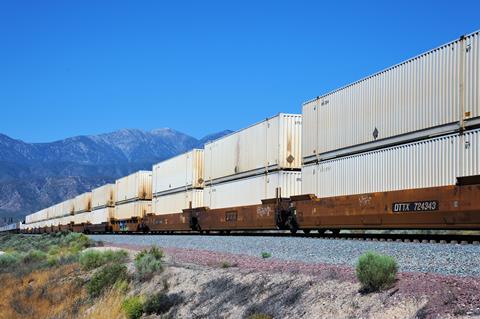
USA: The Federal Railroad Administration has produced three reports into the safety and performance of trains more than 7 500 ft (2 286 m) in length.
Testing found that air brake systems performed largely as expected when in a controlled environment, but FRA says further testing is needed to identify potential safety gaps when operating under non-optimal conditions.
Using only head-end power, the likelihood of unintended brake releases was higher with longer trains and there were slightly slower brake response times. The use of distributed power achieved better braking capability than only head-end power.
The research found that when climbing gradients, certain sections of the train experienced higher forces, and FRA believes more work is needed to understand the impact on the durability of mechanical components.
FRA said there is no federal statute restricting train length or how long trains may block level crossings, but it would continue to pay close attention to the impact of long trains on safety and quality of life.
‘As the length of freight trains increases, the need and demand for accurate, actionable data on long trains — some of which can stretch up to 3 miles [4·8 km] — has never been greater’, said FRA Administrator Amit Bose on May 22. ‘FRA is leading the push for more transparency and data in this area, and through our collaboration with stakeholders in labour and the rail industry, we are ensuring that freight rail operations can operate safely and efficiently without putting rail workers and communities in potentially harmful situations.’

















